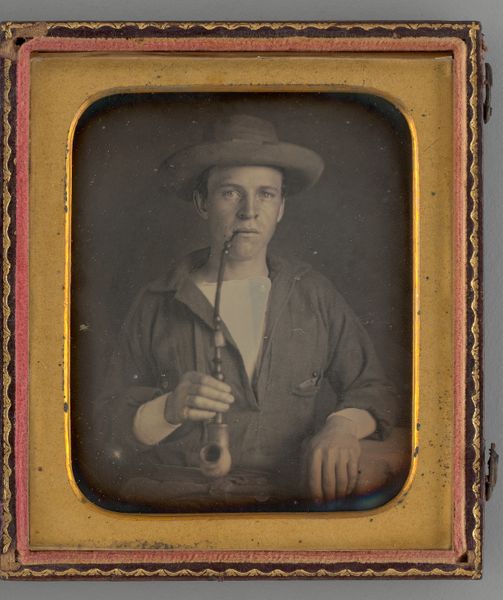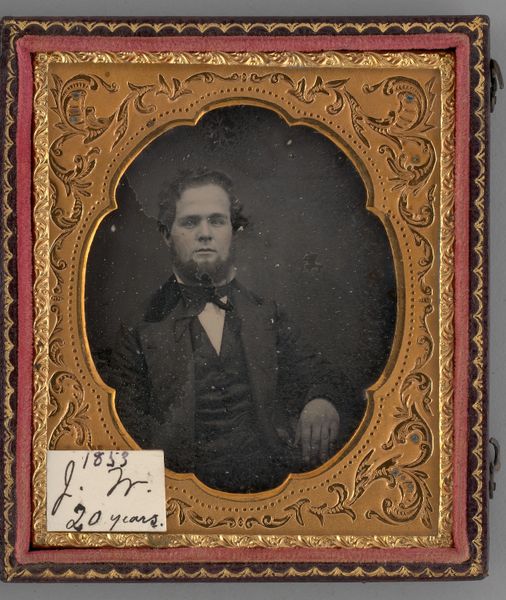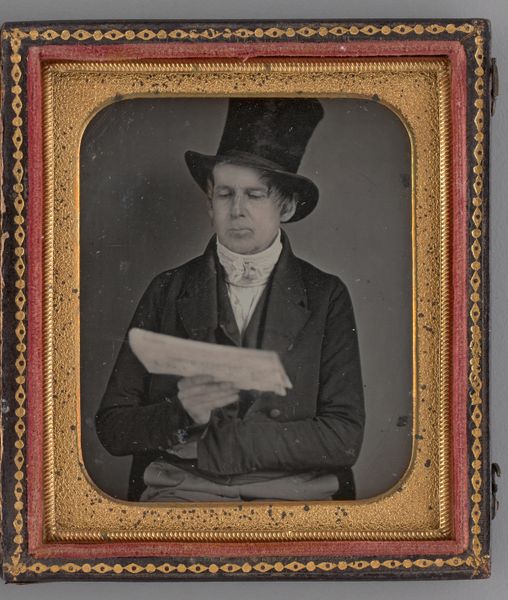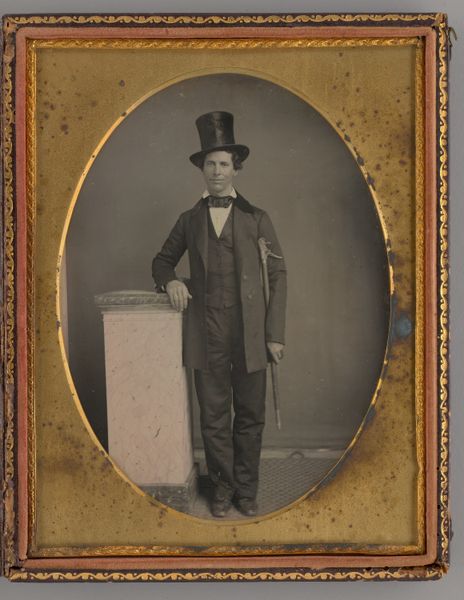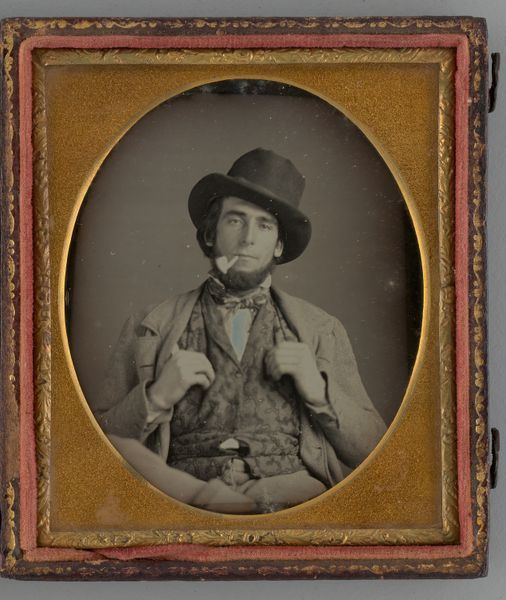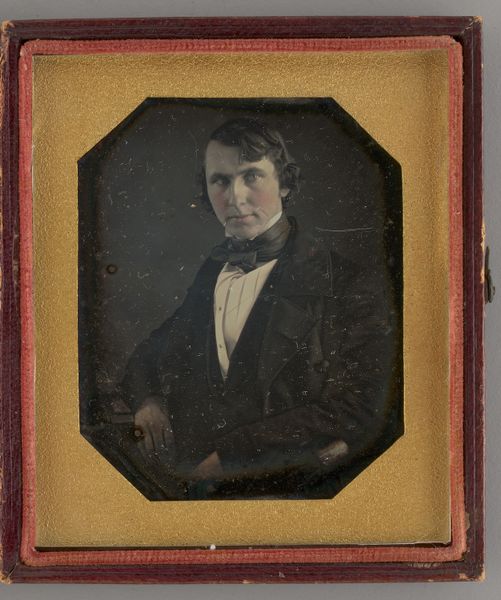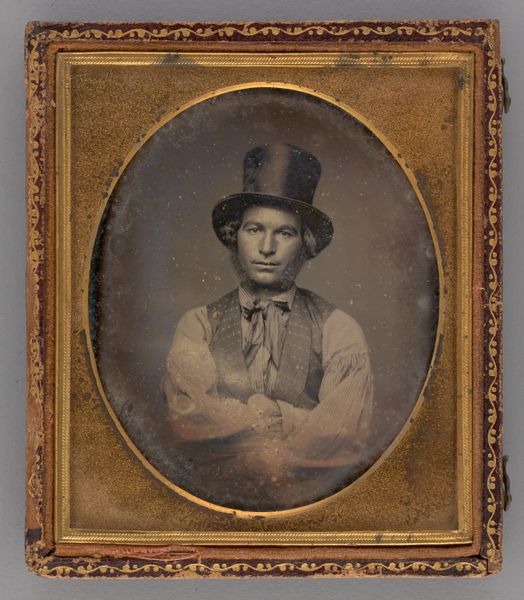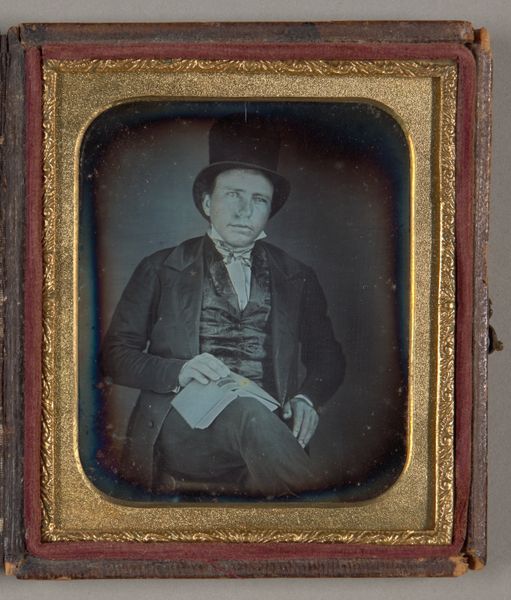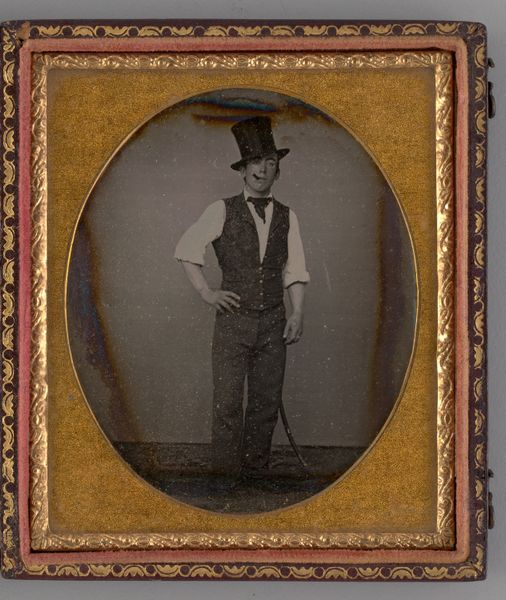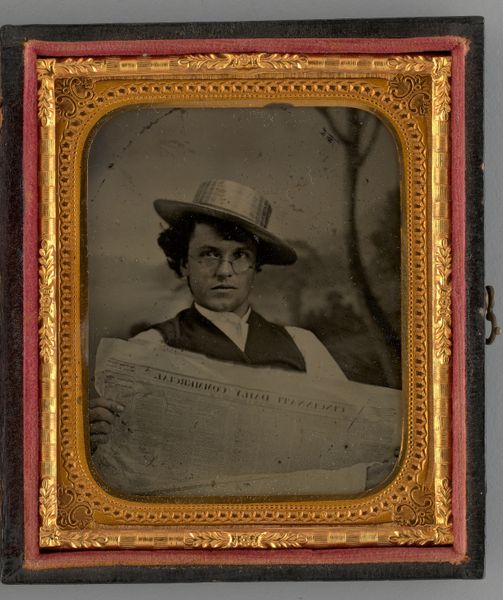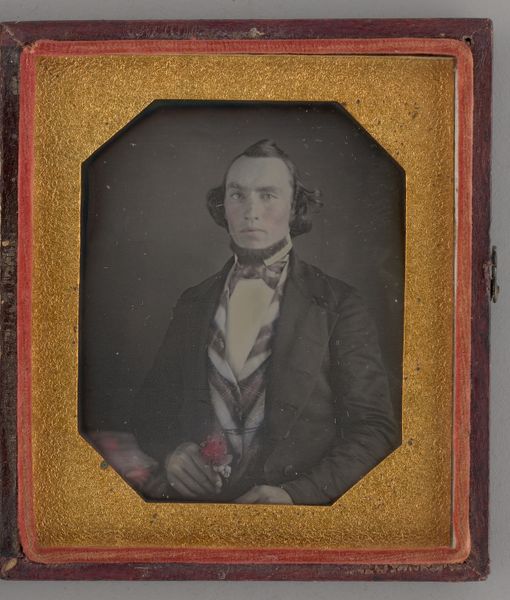
daguerreotype, photography
#
portrait
#
16_19th-century
#
daguerreotype
#
photography
#
united-states
#
realism
Dimensions: 8.3 × 7 cm (3 1/4 × 2 3/4 in., plate); 9.3 × 16 × 1.2 cm (open case); 9.3 × 8 × 1.7 cm (case)
Copyright: Public Domain
This portrait of a young man, holding a mortar, is a photograph made with the 19th-century daguerreotype process. It was a technique that captured images on a silvered copper plate, creating a unique and highly detailed likeness. The shiny surface and delicate nature of the image make it almost jewel-like. The portrait is housed in a decorative case, which speaks to its value as a keepsake. The choice of props is quite interesting. The mortar is a symbol of work, of skilled labor, and of craft traditions. The image then becomes more than just a portrait, it is an assertion of identity through occupation. In the 19th century, the rise of industrialization transformed labor. Photography became an increasingly accessible means of self-representation. By focusing on the materials and making of this object, we understand not just what it represents, but also how it participates in broader social dynamics, connecting the intimate sphere of portraiture with the larger world of work and aspiration.
Comments
No comments
Be the first to comment and join the conversation on the ultimate creative platform.
